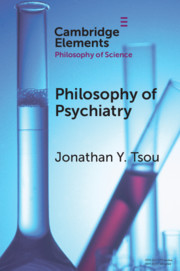Element contents
Philosophy of Psychiatry
Published online by Cambridge University Press: 26 June 2021
Summary
Keywords
- Type
- Element
- Information
- Online ISBN: 9781108588485Publisher: Cambridge University PressPrint publication: 22 July 2021
References
- 13
- Cited by



